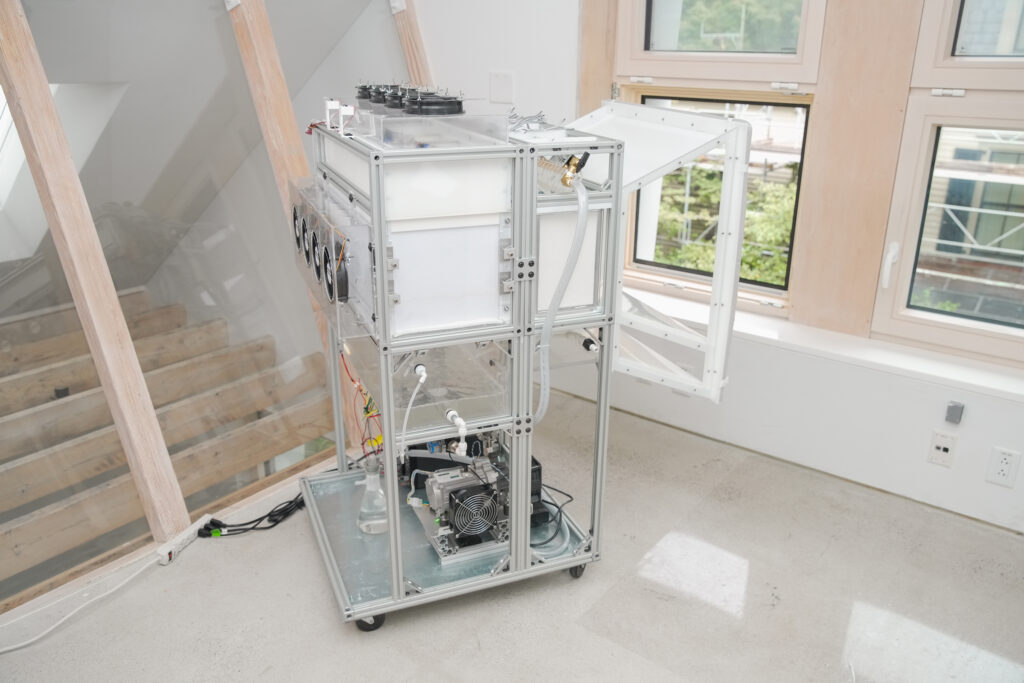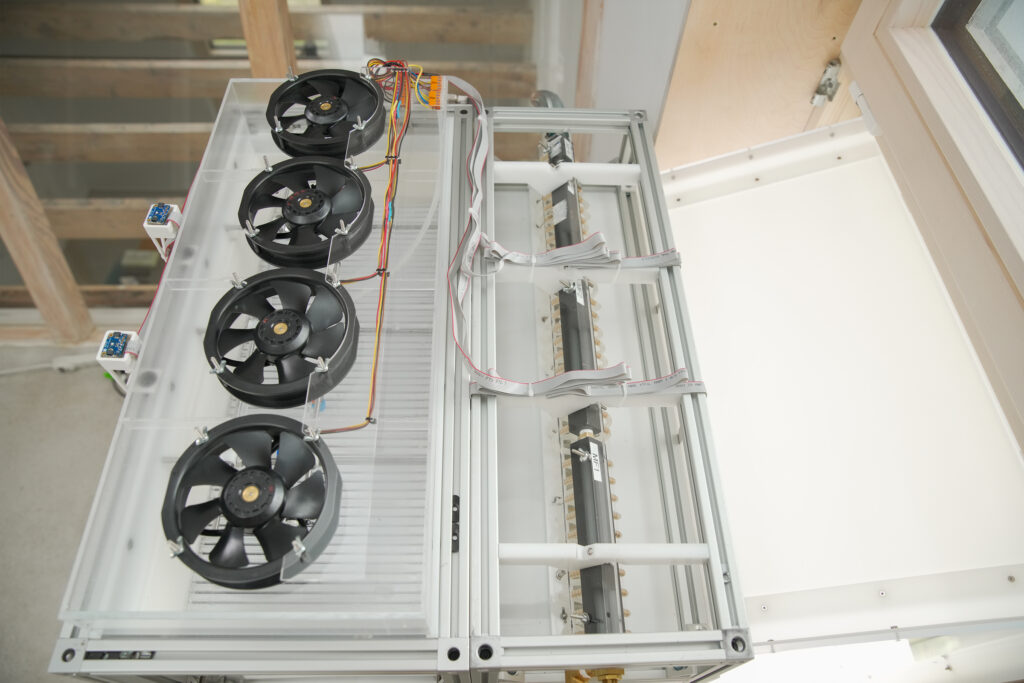Grinham Research Group
Harvard University Graduate School of Design
Vesma
Vacuum Dehumidification + Indirect Evaporative Cooling
Project Overview
Air conditioning (AC) systems represent a substantial portion of global energy consumption and greenhouse gas (GHG) emissions, contributing to 4% of the global total. Within the approximately 2 gigatons of CO2 equivalent associated with building cooling, over two-thirds can be directly attributed to refrigerants and latent loads rather than setpoint temperatures. The proposed technology, Vesma, is a novel approach that integrates regenerative indirect evaporative cooling (IEC) and vacuum membrane dehumidification (VMD) to achieve refrigerant-free humidity control, high water use efficiency with water capture, energy-efficient cooling, and improved fresh air supply.
Project Journey
Exciting news to come.
Innovation
Project Team
Jonathan Grinham
Jack Alvarenga
Peteris Lazovskis
Leonard Palmer
Joanna Aizenberg
Vesma combines IEC and VMD technologies to achieve unprecedented efficiency in cooling and dehumidification. The IEC component utilizes a superhydrophobic nano-architectured barrier layer for indirect evaporative cooling , while the VMD component employs a rationally designed membrane support assembly for highly selective and isothermal water vapor removal. System-level integration allows free cooling for condensation of the permeate stream and improves pumping efficiencies. Further, the modular configuration of these systems allows de-coupled latent and sensible load management for environment-specific targeted operating modes. The synergy of these technologies, offering dew-point cooling and humidity control, positions Vesma as a disruptive solution for the AC industry, especially in humid climates.



